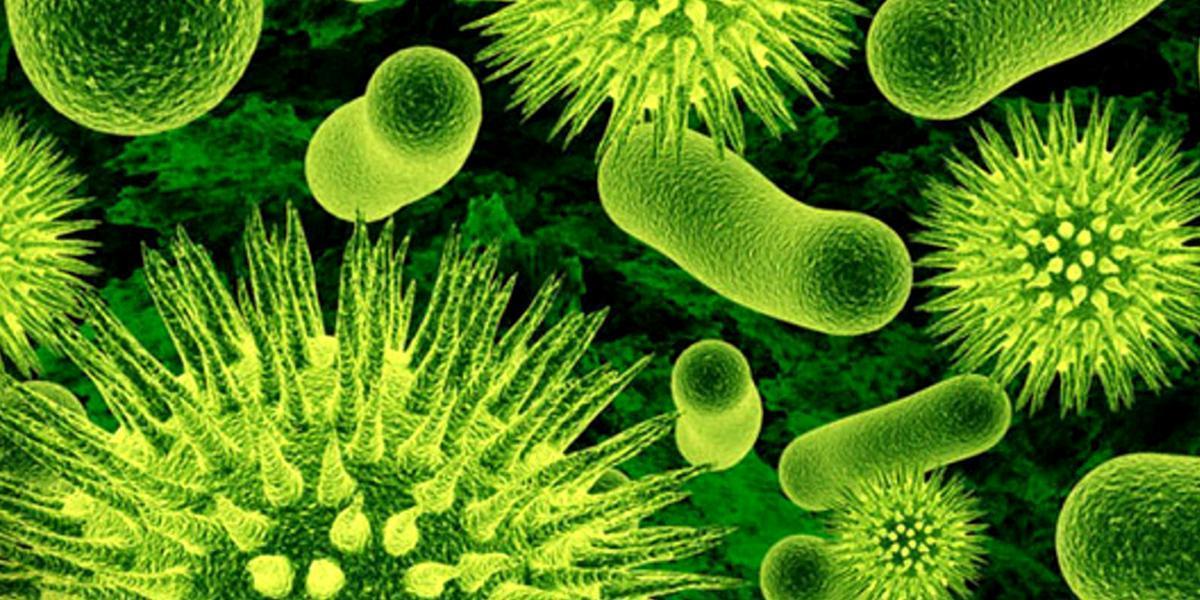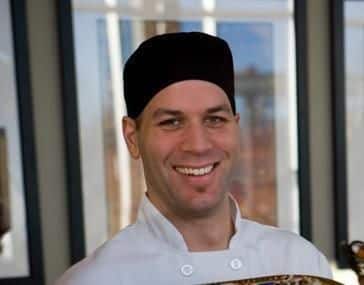

An image of drug-resistant bacteria under the microscope
Following a four-month battle for his life, Chris Linaman committed to sharing his story to help raise awareness about the growing threat posed by antibiotic-resistant bacteria. As executive chef at a large medical center, he is also driving change at an institutional level, harnessing his purchasing power to support the responsible use of antibiotics in food animals.
Linaman is the recipient of the “Sustainable Food Procurement Award” by Health Care Without Harm, an international coalition committed to environmentally responsible health care. As part of Pew’s Supermoms Against Superbugs initiative, Linaman recently met with policymakers in Washington, urging them to maintain sufficient funding for efforts that are critical to combating antibiotic-resistant bacteria, which has become a public health crisis. He spoke with Pew about his illness and his advocacy.

Q: Can you tell us about your MRSA infection and how it affected you and your family?
A: My nightmare started as a basketball injury. I’d had a successful ACL surgery and several weeks into my recovery was doing great and thought my incision was fully healed. But that all changed very quickly. After a weekend trip to visit friends, I went to sleep on a Sunday night feeling fine and woke up Monday morning to find my knee had swollen to the size of a melon. It was bright red and hot to the touch. Within hours, my MRSA infection had been diagnosed and I was in emergency surgery—the first of several surgeries I would need over the course of four days.
Unfortunately, that wasn’t the end of my struggle to survive MRSA.
Just a few days after being sent home from the hospital, my wife found me nearly unconscious, with a swollen face and a temperature of 105 degrees. She rushed me back to the hospital and the doctors told her to begin making plans because they didn’t expect me to make it. Luckily, the spinal tap showed the infection had not yet gotten to my brain. But I needed to have even more surgeries to get rid of it and I also lost my epidermis—the outer layer of my skin—over my entire body, due to an allergic reaction to the antibiotic they were using to treat me.
Ultimately, the doctors were able to get the infection under control within a few weeks, but the road to recovery was long and painful. Even after my infection was cleared and I was out of the hospital, my body was still reeling from all it had been through. My leg muscles were wrecked from all of the surgeries and it took extensive physical therapy to get me back to anything resembling normal. To help put it in perspective, my original ACL surgery had been in early May and it wasn’t until mid-July that I was even able to walk around the block in my neighborhood, a feat that took more than an hour.
Beyond the physical trauma, the whole ordeal also nearly ruined our family financially and it was emotionally devastating as well. At the time, our two kids were just 2 and 4 years old and they didn’t understand what was going on. It still breaks my heart to think about it. Those were the darkest days of my life and, honestly, it’s hard to believe that I’m still here.
Q: Why do you think it’s so important for superbug survivors to share their stories?
A: I don’t think enough people realize the extent of what’s at stake. People have maybe heard the term “post-antibiotic” era but don’t really understand what that could mean to them and their families. While it’s still very difficult for me to talk about—even today, more than 10 years later—sharing my experience can help show what that future could look like if we don’t keep up the fight and do what we can today. As horrible as my MRSA infection was, I’m the “good” outcome—I survived. Way too many others have not.
Q: Why do you advocate for the responsible use of antibiotics in food animals and how have you brought that advocacy to life in your work?
A: It’s absolutely essential that we have effective antibiotics available when people need them. I know this firsthand and I want to make sure that my kids never live in a world where there are no antibiotics to help them. So we need to do anything and everything we can to conserve these lifesaving drugs so that they work when they’re needed—that includes making sure antibiotics are used appropriately and only when necessary—both in people and in animals.
Shortly after I recovered from my MRSA infection, I began working as the executive chef at Overlake Medical Center in Bellevue, Washington and in that role I created a procurement policy for the center that prioritizes bringing healthy food to our community and gives preference to food producers who are working to reduce antibiotic use. That policy has really been the foundation for driving significant increases in the proportion of responsibly raised food we’re able to source. We’ve gone from approximately 19 percent of our proteins being classified as “reduced antibiotic use” in 2012, up to 80 percent in 2016. And during this same time, I’ve seen the market for responsibly raised meats evolve as well. It’s been increasingly easier and less expensive to find these types of proteins and that’s part of what’s made our dramatic shift at Overlake possible. It’s not just small and local famers offering these types of products anymore, it’s also producers on a larger scale and that’s encouraging.
Q: What can individuals do to support the responsible use of antibiotics in animal agriculture?
A: Everyone can do something. As patients, we can talk to our doctors about whether an antibiotic is necessary. When it comes to reducing antibiotic use in food animals, we can all commit to doing our research and being mindful shoppers who choose to purchase products from farmers and companies that are committed to minimizing antibiotic use. Consumer demand for responsibly raised food has been a powerful force for change in recent years and together we can make sure that demand continues to grow and make a real difference.

 233k
233k  41k
41k  Subscribe
Subscribe 